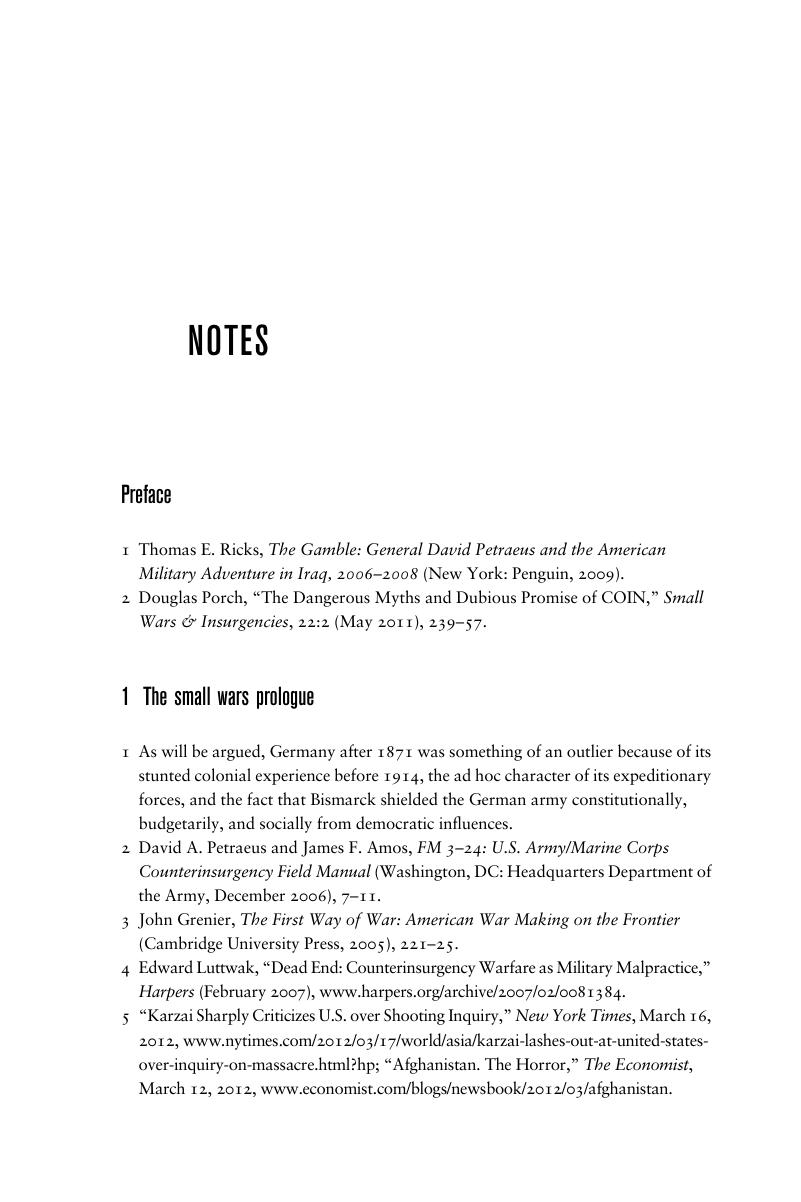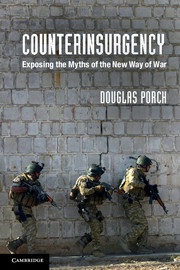Book contents
- Frontmatter
- Contents
- List of illustrations
- List of maps
- Preface and acknowledgments
- 1 A “happy combination of clemency with firmness”: the small wars prologue
- 2 The road from Sedan
- 3 The paroxysms of imperial might in the shadow of the Great War
- 4 From Tipperary to Tel Aviv: British counterinsurgency in the World War II era
- 5 From small wars to la guerre subversive: the radicalization and collapse of French counterinsurgency
- 6 Vietnam, counterinsurgency, and the American way of war
- 7 “A conspiracy of heroes”: revolution and counterinsurgency in Latin America
- 8 Building the “most successful counterinsurgency school”: COIN as the British way of war
- 9 Britain’s Thirty Years’ War in Northern Ireland
- 10 Vietnam with a happy ending: Iraq and “the surge”
- 11 Conclusion
- Notes
- Select bibliography
- Index
- References
Notes
Published online by Cambridge University Press: 05 June 2014
- Frontmatter
- Contents
- List of illustrations
- List of maps
- Preface and acknowledgments
- 1 A “happy combination of clemency with firmness”: the small wars prologue
- 2 The road from Sedan
- 3 The paroxysms of imperial might in the shadow of the Great War
- 4 From Tipperary to Tel Aviv: British counterinsurgency in the World War II era
- 5 From small wars to la guerre subversive: the radicalization and collapse of French counterinsurgency
- 6 Vietnam, counterinsurgency, and the American way of war
- 7 “A conspiracy of heroes”: revolution and counterinsurgency in Latin America
- 8 Building the “most successful counterinsurgency school”: COIN as the British way of war
- 9 Britain’s Thirty Years’ War in Northern Ireland
- 10 Vietnam with a happy ending: Iraq and “the surge”
- 11 Conclusion
- Notes
- Select bibliography
- Index
- References
Summary

- Type
- Chapter
- Information
- CounterinsurgencyExposing the Myths of the New Way of War, pp. 347 - 399Publisher: Cambridge University PressPrint publication year: 2013



